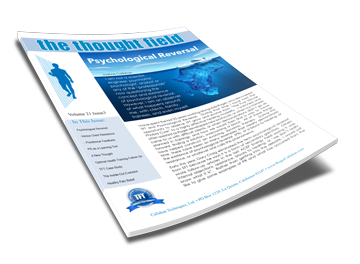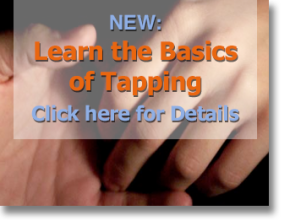There is no doubt that how we experience ourselves in relationships is of great importance to us. Be it within the family, with friends or coworkers we are interacting and relating to many people throughout our lives. The scenarios are many, and the situations differ but underlying all is the hope that we create something harmonious and enjoyable that enriches our lives. Read more
Suzanne Connolly, LCSW, LMFT
If you were asked what the major cause of death and disability is globally, you would probably guess heart disease — and you would be correct. But did you know that the World Health Organization (WHO) has estimated that posttraumatic stress will be second only to heart disease as the cause of death and disability by the year 2020? That means that by the year 2020, approximately 780,000,000 men and women globally will be suffering from posttraumatic stress in any one year. Right now, one out of 20 men and one out of 10 women in the world is suffering from posttraumatic stress.
Posttraumatic stress not only affects individuals, it affects families and entire communities. And we are just talking about posttraumatic stress; there are so many other mental health issues that confront individuals throughout the world. As TFT practitioners, we know from our research and experience, that there is no more efficient and effective way to tackle mental health issues than Thought Field Therapy.
But the number of Thought Field Therapy therapists throughout the world is limited; and there are only so many individuals and families that one TFT practitioner can treat. It is imperative, that we begin an effort to teach more TFT practitioners to teach others to use our proven Thought Field Therapy Techniques, through humanitarian outreach.
The WHO met in 2009 and addressed the problem of what to do after man-made and natural disasters. They concluded that in a world of high need and few trained professionals, para-professionals need to be trained to fill the gap, referring only those who couldn’t be helped by the para-professionals to available professionals.
Your TFT Foundation is constantly making an effort to spread TFT for humanitarian purposes. Your TFT Foundation has developed a method of treating trauma after large scale disasters that has been tested and refined throughout the years in Haiti, Tanzania, Mexico, Kuwait, Japan, Uganda, Rwanda, Burundi, South Sudan and the Democratic Republic of the Congo. This method has also been researched, and three randomized control studies have been published. You can learn this method and its protocol during a one-day intensive before the 2016 International Energy Psychology Conference.
Persons receiving this one-day training will learn to train professionals and para-professionals in humanitarian outreach settings and will receive a certification to teach TFT to professionals and non-professionals for humanitarian purposes. They will not be certified to teach TFT, in any way, for fees or non-humanitarian purposes.
Please join Suzanne Connolly and many other TFT practitioners on the second of June for this important TFT activity. To quote Helen Keller, “Although the world is full of suffering, it is full also of the overcoming of it.” Be part of the solution and join us in Santa Clara.
***********
Suzanne Connolly, LCSW, LMFT, has trained over 2,000 people worldwide to use TFT and to integrate TFT in clinical settings. Her presentation venues include Rwanda, Israel and Kuwait. (www.tappingtft.com) Suzanne Connolly is a member of the TFT Foundation Board.
Would you like to get trained in helping communities heal after disaster? Would you like to learn more about using TFT in humanitarian settings? Join us for the 18th International Energy Psychology Conference in Santa Clara, CA from June 2-5. Suzanne will be offering a full-day training just before the conference where you will learn a protocol for using TFT in communities after large-scale traumatic events. Learn more.
By Caroline Avant
When people first start to meditate there are 3 common initial reactions that I have heard time and time again in my role as a meditation facilitator. In this post we will explore the first point which is:
Am I doing it right?
I hear this in the inverse too, ‘Am I doing it wrong’? Rest assured that you cannot do it wrong! Yes, you heard it here folks, you cannot do High Tech Meditation wrong. Read more

How we feel is directly related to how much quality rest we get.
Based on the multiple web statistics for the USA or Canada or Great Britain, “Insufficient Sleep Is a Public Health Epidemic”.
The western world seems to have an increasing problem with sleep disorders. So much so, that recent studies in all three countries are calling it a Public Health Epidemic – saying it is “putting our health at risk”. Sleep insufficiency is linked to motor vehicle crashes, industrial disasters, and medical and other occupational errors.
A perfect example of this was a feature story on the evening NEWS – a bank employee fell asleep across his keyboard and instead of making an $83 transfer into a retiree’s bank account, he transferred over $2 million dollars. Luckily the bank caught the error and corrected it. But what if he had fallen asleep across the steering wheel of his car, he could have caused a fatal accident.
People who suffer from poor sleep are also more likely to suffer from chronic diseases such as hypertension, diabetes, depression, obesity and even cancer.
Millions of us suffer the consequences of too little sleep. What are our options? We face the troublesome side-effects of the common OTC or prescription drugs offered to remedy insomnia. Read more
 Our last issue of the Thought Field newsletter shared a touching story about a little girl in the hospital dying from cancer, and suffering severe pain. As I was reading it, I thought back about several times over the years, that Roger would work with a cancer patient, who, like this little girl, was in severe pain, in spite of the morphine drips and heavy medical pain killers.
Our last issue of the Thought Field newsletter shared a touching story about a little girl in the hospital dying from cancer, and suffering severe pain. As I was reading it, I thought back about several times over the years, that Roger would work with a cancer patient, who, like this little girl, was in severe pain, in spite of the morphine drips and heavy medical pain killers.
As I thought about the many instances over the years that we have provided pain relief for someone, where nothing else had worked, I was reminded about what a powerful and simple tool we have to help chronic pain sufferers.
A quick internet search helped me quantify the number of people and conditions daily burdened with physical pain.
Lower back pain, headaches, neck pain, arthritis pain and any chronic pain create a lower overall quality of life. Chronic pain sufferers – over 100 million in the USA alone – report: Read more
While visiting a friend’s farm recently, the farmer’s daughter shared with me the story of her 7-year-old mare, who was extremely fearful of people—and especially hostile to men. The horse had been mistreated by its previous male owner. By now, it needed veterinary treatment to trim its hooves—which were overgrown and causing the horse extreme discomfort.
Unfortunately, the local veterinarian is a man and couldn’t get near the horse, even to examine it. Not wishing her mare to be sedated, the farmer’s daughter shared with me her dilemma.
Could TFT help calm this anxious horse, I wondered?
I explained briefly about TFT, then asked the daughter to stroke the horse’s forehead, and tap gently under its eye. I then asked her to tap behind the horses foreleg (as close to where I imagined the arm point would be), then tap the horse’s chest—as close to the collarbone as she could get.
Since it was impossible for me—a man—to get near the horse initially, I asked the daughter to tap out the algorithm instead. As she tapped away to my instructions, I could see the horse calming down from a distance. I entered the field and slowly walked to the animal, repeating the algorithm where the daughter left off.
In just a few minutes, the mare was almost asleep.
I asked the farmer’s daughter to walk away and leave the field. By then, she was extremely surprised to find the horse calm, receptive and unaffected by her departure—particularly when the mare had not been bridled in any way, nor had I used any treats.
Later, as I walked about the field, the horse followed me, nudging me in the back—her fear of people (and men, in particular) completely resolved. Even another male visitor to the farm that afternoon couldn’t change the anxiety-free state of the mare.
Of course, the veterinarian was able to treat her hooves with ease. But getting her to hum a tune while tapping was a different matter entirely! —Brian Ewart as told to Ian Graham




